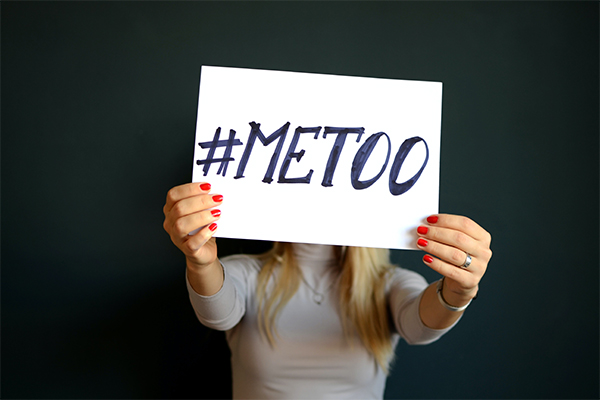The Background of the #Metoo Movement
The #Metoo movement (hereinafter called ‘the Movement’) is a hashtag, which has been widely used on social media to resist sexual assault and sexual harassment. The American actress Alyssa Milano, who plays a crucial role in promoting the movement, encourages women to disclose their sexual assault experience on social media platforms. As a gender-based violence, sexual misbehaviors are treated as a criminal, organizational and ethical problem (O’Neil, Sojo, Fileborn, Scovelle & Milner, 2018). Currently, this movement has caused a lot of thinking and discussion.
In fact, this sexual misbehaviors’ issue was not valued in the past because it is widely believed that sexual assault is a minority. However, according to the research of WHO (2013), more than one-third of women all over the world have experienced sexual assault or sexual violence, which brings them infinite physical and mental harm. When realizing the serious situation, people have focus on the Movement.
Nowadays, as an increasing number of people have participated in the #Metoo, and people begin to think about the movement itself. Many think it makes sense and brings values, whereas there are still some people criticizing it.
Values and Opportunities Brought By the Movement
There are four main opportunities and values of the Movement: 1. it provides opportunities on the physical and mental recovery for the victims. 2. It provides opportunities on protecting women’s rights. 3. It motivates the world to reshape standards of thinking. 4. It prompts the government to establish more comprehensive laws
Specifically, when discussing the recovery, we must understand the enormous harm that sexual assault can lead to. Berg (2006) pointed that suffering from sexual violence can lead to heavy psychological stress and even unstoppable fear. This mental hurt can lead to severe posttraumatic stress disorder (PTSD), which can trigger the victims to experience the pain repeatedly in the mind, and even lead to self-harm, suicide and other serious behaviors.
At the same time, psychological damage can be transformed into physical harm. Long-term psychological pressure can lead to high blood pressure, heart disease and even cancer (Cohen, Janicki-Deverts & Miller, 2007). Thanks to the Movement, the victims can pour out their own misfortunes on the social platforms, they no longer have to hide this encounter, and because the participants of this activity are numerous, the victims will not feel lonely and stressed, which can help them to recover.
Secondly, essentially, the activity is a feminist movement. Solving the problems on economy and the whole society is the key to improve women’s health (Marmot et al., 1991). In other words, by defending the health rights of women, the Movement pushes people to pay attention to women’s status and gender equality. It has challenged the absolute rights of men. The patriarchal power structure has strict gender norms and control over women. The Movement challenges the traditional view that women have no rights to express pain and fight for interests. The Movement speaks for women, and show that women’s willingness and feelings should be respected.
Next, the Movement pushes the changes in the traditional ways of thinking. From the perspectives of women themselves, after sexual assault, women themselves feel ashamed. The research on 136 women in the UK shows that the women would blame their own bodies, actions after crimes, but not the abusers (Vidal & Petrak, 2007). Beyond that, the public is likely to blame the victims as well. After a crime, the public would evaluate the woman’s dress, career or personal behaviors. For example, if the woman is in the revealing clothing, she would be accused of frivolity. Even, people may say that she deserves to be sexually assaulted. As a result, women refuse to speak up after suffering. Then, from the view of the perpetrators, they try to rationalize their actions and show their innocence.
They emphasize that they do the sexual harassment due to their animal nature, which should not be blamed. They mean that they are tempted, so they misbehave. Or some men think women are quite shy and unwilling to express themselves. When a man offers the sex requirements, even if the woman says “no”, she means “yes” in the mind. Now, the Movement reverses these concepts. It specifies right and wrong, yes and no. There are no reasons for the victims to be injured, no matter how they act or dress.
Women have freedom to act as they like, and the ways they choose do not mean to seduce others. The criminal is wrong and the victim should not be blamed at all. The movement also pointed that the animal nature of abuser is driven by the human nature, and their behavior is not unconscious and innocent. More importantly, the Movement emphasized that what women say is their true intention, yes means yes, no means no.
Finally, the Movement promotes the development of laws. Previously, many countries have clearly stated that sexual assault is illegal and have prescribed penalties for it. However, the sex harassment is not defined clearly. In fact, the sexual harassment in the workplace is a serious problem. When the Movement emerged, the government began to come up with solutions and make changes on laws (Berkowitz, 2018). For example, in South Korea, the government has clearly defined workplace sexual harassment as well as sentencing. Simultaneously, the law requires the employers to give a lecture or meeting to employees on prev

